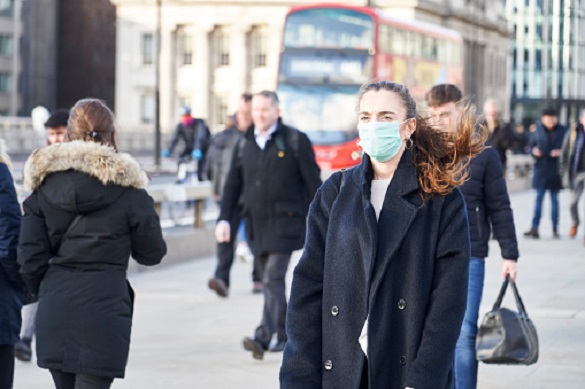
A Bayesian model created by researchers at the University of Liverpool is being used by the UK Government to estimate the UK’s R number – the reproduction number – of COVID -19.
The R number is a key measure for tracking the spread of COVID-19 and is calculated by the Government using different models developed by leading academic groups. Each model uses a different approach and data sources including the number of people dying, admitted to hospital or testing positive for the virus over time.
The University’s model is a Bayesian statistical model and was developed by Professor Simon Maskell‘s research group.
The Liverpool model fits epidemiological surveillance data, including deaths, hospital admissions, and symptomatic reports made via the NHS 111 online service. It comprises a deterministic compartmental transmission model governed by a system of ODEs and a stochastic observation model.
Professor Maskell’s research interests are focused on developing ground-breaking algorithmic solutions that harness the power of future computing to answer hard questions of extant data and can be translated into tangible advantage across multiple sectors in both industry and government.
He currently heads up the University’s £3.5M EPSRC Big Hypotheses project to create the next-generation of Data Science tools that industry, government and science needs. He is also Director of the £7.1m EPSRC Centre for Doctoral Training in Distributed Algorithms, which is training 60 PhD students to possess the expertise to use such tools and meet the world’s pressing need for highly-trained data scientists.
He said: “Our modelling expertise draws on the Big Hypotheses project but also the wider portfolio of work to enhance the state-of-the-art in Bayesian inference in general and the Stan probabilistic programming language specifically.
“This expertise is regularly applied to many sectors, including health, and, prior to COVID-19, we had developed a model to monitor flu epidemics by combining data from disparate sources. When the pandemic struck last year, we were able to transfer this Bayesian modelling expertise to COVID-19.
“Our COVID-19 modelling activity centres on two PhD students who have been seconded to the UK Health Security Agency (UKHSA).”
The Liverpool model is one of a number produced by leading academic groups used together to estimate the R number. Models are also produced by Universities including Oxford, Cambridge/PHE, and Imperial. These models are constantly being developed, amended, and updated to improve their representation and simulation of the current epidemic across the UK.
Professor Maskell’s work to support the global fight against COVID-19 also includes collaboration with the Andrew Gelman’s group (founders of Stan) at Columbia University, New York to create an open repository of models that are being used to support the calculation of R numbers. He is also collaborating with the University of Sao Paolo, Brazil, who are using a variant of the model developed by his team.
Reference:
UKHSA Publication: Reproduction number (R) and growth rate: methodology